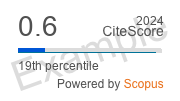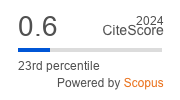Antegrade cerebral perfusion in patients with different anatomical variants of the brachiocephalic trunk
https://doi.org/10.29001/2073-8552-2025-40-3-140-147
Abstract
Aim: To analyze the results of antegrade brain perfusion via the brachiocephalic trunk during hemiarch surgery in patients with variant anatomy of the brachiocephalic trunk.
Material and Methods. The retrospective study included 259 patients who underwent surgery for an ascending aneurysm. The patients were divided into two groups depending on the anatomy of the brachiocephalic trunk: with normal (n = 202) and variant vascular anatomy (n = 57). Intraoperative and early postoperative data were analyzed in patients of both groups, including an assessment of neurological and cognitive status.
Results. According to infrared spectroscopy, the level of brain oxygenation in patients of both groups did not exceed normal values during the entire operation, including the period of circulatory arrest (63–72%). In 1 (0.49%) case, a stroke developed in the group with normal brachiocephalic trunk anatomy. The incidence of delirious condition in the early postoperative period was higher in the group with normal brachiocephalic trunk anatomy – 8 (3.9%) versus 1 (1.7%) cases in the group with variant brachiocephalic trunk anatomy, but without statistically significant differences (p = 0.414). Cognitive function in the postoperative period in patients in the groups with normal and variant brachiocephalic trunk anatomy did not decrease below the normal threshold of 25 and 23 points, respectively (p = 0.11).
Conclusions. Antegrade perfusion of the brain through the brachiocephalic trunk during hemiarch operations in patients with normal and variant anatomy of the brachiocephalic trunk does not worsen cognitive status, reduces the frequency of neurological complications, thus this type of perfusion is appropriate, safe and effective.
About the Authors
D. S. PanfilovRussian Federation
Dmitri S. Panfilov - Dr. Sci. (Med.), Senior Research Scientist, Department of Cardiovascular Surgery, Cardiology Research Institute.
111a, Kievskaya str., Tomsk, 634012
E. A. Petrakova
Russian Federation
Elizaveta A. Petrakova - Graduate Student, Cardiovascular Surgeon, Department of Cardiovascular Surgery, Cardiology Research Institute, Tomsk NRMC.
111a, Kievskaya str., Tomsk, 634012
N. L. Afanasieva
Russian Federation
Natalya L. Afanasieva - Cand. Sci. (Med.), Research Scientist, Cardiologist, Department of Cardiovascular Surgery, Cardiology Research Institute, Tomsk NRMC.
111a, Kievskaya str., Tomsk, 634012
B. N. Kozlov
Russian Federation
Boris N. Kozlov - Dr. Sci. (Med.), Head of the Department of Cardiovascular Surgery, Cardiology Research Institute, Tomsk NRMC.
111a, Kievskaya str., Tomsk, 634012
References
1. Mazzolai L., Teixido-Tura G., Lanzi S., Boc V., Bossone E., Brodmann M et al. ESC Scientific Document Group. 2024 ESC Guidelines for the management of peripheral arterial and aortic diseases. Eur. Heart J. 2024;45(36):3538–3700. https://doi.org/10.1093/eurheartj/ehae179.
2. Isselbacher E.M., Preventza O., Hamilton Black III J., Augoustides J.G., Beck A.W., Bolen M.A. et al. 2022 ACC/AHA Guideline for the Diagnosis and Management of Aortic Disease: A Report of the American Heart Association/American College of Cardiology Joint Committee on Clinical Practice Guidelines. J. Am. Coll. Cardiol. 2022;80(24):e223–e393. https://doi.org/10.1016/j.jacc.2022.08.004.
3. Angeloni E, Melina G, Refice SK, Roscitano A, Capuano F, Comito C, Sinatra R. Unilateral versus bilateral antegrade cerebral protection during aortic surgery: an updated meta-analysis. Ann. Thorac. Surg. 2015;99:2024–2031. http://dx.doi.org/10.1016/j.athoracsur.2015.01.070.
4. Piperata A., Watanabe M., Pernot M., Metras A., Kalscheuer G., Avesani M. et al. Unilateral versus bilateral cerebral perfusion during aortic surgery for acute type A aortic dissection: a multicentre study. Eur. J. Cardiothorac. Surg. 2022;61:828–835. doi: 10.1093/ejcts/ezab341.
5. Layton K.F., Kallmes D.F., Cloft H.J., Lindell E.P., Cox V.S. Bovine aortic arch variant in humans: clarification of a common misnomer. AJNR Am. J. Neuroradiol. 2006;27(7):1541–1542. https://pmc.ncbi.nlm.nih.gov/articles/PMC7977516/ (10.07.2025)
6. Panfilov D., Saushkin V., Sazonova S., Kozlov B. Ascending aortic surgery for small aneurysms in men and women. Braz. J. Cardiovasc. Surg. 2023;39(1):e20220179. https://doi.org/10.21470/1678-97412022-0179.
7. Carson N., Leach L., Murphy K.J. A re-examination of Montreal Cognitive Assessment (MoCA) cutoff scores. Int. J. Geriatr. Psychiatry. 2018;33(2):379–388. https://doi.org/10.1002/gps.4756.
8. Kozlov B.N., Ponomarenko I.V., Panfilov D.S. The current status of the neuroprotection problem in aortic arch surgery. Siberian Journal of Clinical and Experimental Medicine. 2024;39(2):14–20. (In Russ.). https://doi.org/10.29001/2073-8552-2024-39-2-14-20.
9. Kozlov B.N., Ponomarenko I.V., Panfilov D.S. The current status of the neuroprotection problem in aortic arch surgery. Siberian Journal of Clinical and Experimental Medicine. 2024;39(2):14–20. (In Russ.). https://doi.org/10.29001/2073-8552-2024-39-2-14-20.
10. Charchyan E.R., Breshenkov D.G., Dzeranova A.N., Panov A.V., Belov Yu.V. Choice of perfusion and cannulation tactics in minimally invasive thoracic aortic surgery. Cardiology and cardiovascular surgery. 2021;14(1):71–79. (In Russ.) http://dx.doi.org/10.17116/kardio20211401171.
11. Malvindi P.G., Scrascia G., Vitale N. Is unilateral antegrade cerebral perfusion equivalent to bilateral cerebral perfusion for patients undergoing aortic arch surgery? Interact. CardioVasc. Thorac. Surg. 2008;7:891–897. http://dx.doi.org/10.1510/icvts.2008.184184.
12. Angeloni E., Melina G., Refice S.K., Roscitano A., Capuano F., Comito C. et al. Unilateral versus bilateral antegrade cerebral protection during aortic surgery: an updated meta-analysis. Ann. Thorac. Surg. 2015;99:2024–2031. http://dx.doi.org/10.1016/j.athoracsur.2015.01.070.
13. Piperata A., Watanabe M., Pernot M., Metras A., Kalscheuer G., Avesani M. et al. Unilateral versus bilateral cerebral perfusion during aortic surgery for acute type A aortic dissection: a multicentre study. Eur. J. Cardiothorac. Surg. 2022;61:828–835.
14. Kaul Javangula K., Ganti S., Balaji S., Sivananthan M., Gough M. et al. Continuous selective bilateral antegrade cerebral perfusion through anomalous innominate artery for repair of root, ascending aortic and arch aneurysm –challenges, vagaries and opportunities of bovine arch variant anatomy and review of literature. Perfusion. 2009;24(2):121–133. https://doi.org/10.1177/0267659109106774.
15. Yousef S., Singh S., Alkukhun A., Alturkmani B., Mori M., Chen J. et al. Variants of the aortic arch in adult general population and their association with thoracic aortic aneurysm disease. J. Card. Surg. 2021;36(7):2348–2354. https://doi.org/10.1111/jocs.15563.
16. Marrocco-Trischitta M.M., Alaidroos M., Romarowski R.M., Milani V., Ambrogi F., Secchi F. et al. Aortic arch variant with a common origin of the innominate and left carotid artery as a determinant of thoracic aortic disease: a systematic review and meta-analysis. Eur. J. Cardiothorac. Surg. 2020;57(3):422–427. https://doi.org/10.1093/ejcts/ezz277.
17. Açar Çiçekcibaşı A.E., Uysal E., Koplay M. Anatomical variations of the aortic arch branching pattern using CT angiography: a proposal for a different morphological classification with clinical relevance Anat. Sci. Int. 2022;97(1):65–78. https://doi.org/10.1007/s12565-021-00627-6.
18. Shabanov A.A., Sirota D.A., Bergen T.A., Lyashenko M.M., Chernyavsky A.M. Anatomical variability of the structure of the arch and thoracic aorta and its effect on pathological conditions of the aorta. Pathology of blood circulation and cardiac surgery. 2020;24(4):72–82. (In Russ.). https://doi.org/10.21688/1681-3472-2020-4-72-82.
19. Kozlov B.N., Panfilov D.S., Berezovskaya M.O., Ponomarenko I.V., Afanasyeva N.L., Maksimov A.I. et al. Analysis of the degree of neuronal damage and cognitive status after aortic arch surgery. Russian Journal of Cardiology. 2019;24(8):53–58. (In Russ.). https://doi.org/10.15829/15604071-2019-8-52-58.
20. Uchino G., Yunoki K., Sakoda N., Saiki M., Hisamochi K., Yoshida H. Innominate artery cannulation for arterial perfusion during aortic arch surgery. J. Card. Surg. 2017;32(2):110–113. https://doi.org/10.1111/jocs.13091.
21. Harky A., Wong C.H.M., Chan J.S.K., Zaki S., Froghi S., Bashir M. Innominate artery cannulation in aortic surgery: A systematic review. J. Card. Surg. 2018;33(12):818–825. https://doi.org/10.1111/jocs.13962
Review
For citations:
Panfilov D.S., Petrakova E.A., Afanasieva N.L., Kozlov B.N. Antegrade cerebral perfusion in patients with different anatomical variants of the brachiocephalic trunk. Siberian Journal of Clinical and Experimental Medicine. 2025;40(3):140-147. (In Russ.) https://doi.org/10.29001/2073-8552-2025-40-3-140-147





.png)





























